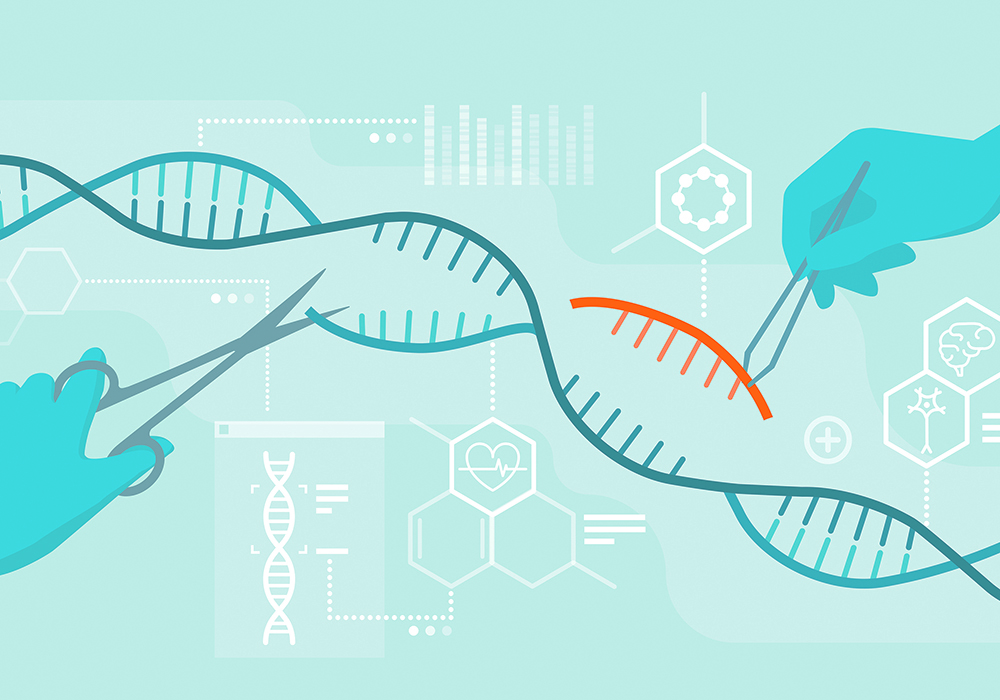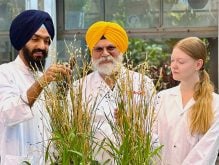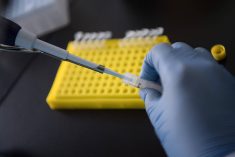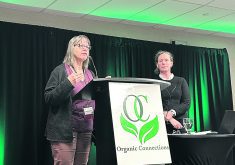Researcher says a more integrated global market makes new technologies more difficult than during the birth of GMOs
Gene-editing science is complex and a technological miracle.
However, it might not be as challenging to master as the art of managing social psychology and human government and regulatory systems, a biotechnology conference heard.
“Maybe science is the easy part,” said Rodolphe Barrangou, a researcher who uses CRISPR gene-editing technology at North Carolina State University.
“We have to address the bottleneck of acceptance and regulations.”
Barrangou and other gene-editing experts spoke on a Gairdner Global Perspective Panel about the great potential that CRISPR brings to plant breeding and also about the potential difficulties developers will face once that technology is ready to leave the lab and research plots.
Read Also

Drones now used to assess wildlife crop damage in Saskatchewan
Wildlife damage in Saskatchewan crops is now assessed by drones and artificial intelligence.
Gene-editing technology avoids some acceptance problems faced by transgenic developments because it does not take genetic material from one species and put it into another one.
However, its deliberate manner of changing the genetic structure within plants is challenged by some of the same anti-GMO interests. While regulators in many parts of the world seem open to accepting the technology as similar to traditional breeding, some, particularly in the European Union, are showing signs of treating gene-editing the same as they do with GMO technology, which has prevented most of its uses in that region.
In some ways developing new technologies is more difficult today than during the birth of GMOs due to a more integrated global market, said Peter Phillips of the University of Saskatchewan.
“It’s getting harder because it’s no longer a nationally controlled space,” said Phillips, an expert on the interaction of innovation and public acceptance.
“We’re dealing with multinational companies and international research teams, so it gets more difficult but it’s still possible to take some leadership and put some pieces together that are on the table but they’re not (connected) in a way that leads to acceptance in the product space.”
Phillips urged gene-editing technology developers, who include those in the agriculture, forestry and health industries, to carefully build public acceptance.
“I think we need to be a little less prescriptive and more assisting,” said Phillips.
“We assume that it’s a rational, simple process for somebody to assess and use the technology (but that is) not so…. It is entirely possible that there’s a good technology that will have material effects that people will not use, so quite often technology gets stranded.”
Beyond building public acceptance, developers also have to realize that the approval process, even if not a deliberate obstacle, can leave innovations stuck in traffic.
“There’s a shortage, a shortage of skilled people, a shortage of investment, a shortage of leadership and vision,” said Phillips.
“We’re fixated on the technology, but we’re not understanding that larger package.”
Researchers will have to work through the intellectual property complications in their own field, Phillips noted, with differing views on what should be shared and what is kept private.
“There’s going to be a tapestry of access to data,” said Phillips.
To avoid the problems GMOs have faced, researchers need to take these challenges seriously now.
“They’re not trivial. They’re not insurmountable, but they won’t resolve themselves without some difficulties,” said Phillips.
















